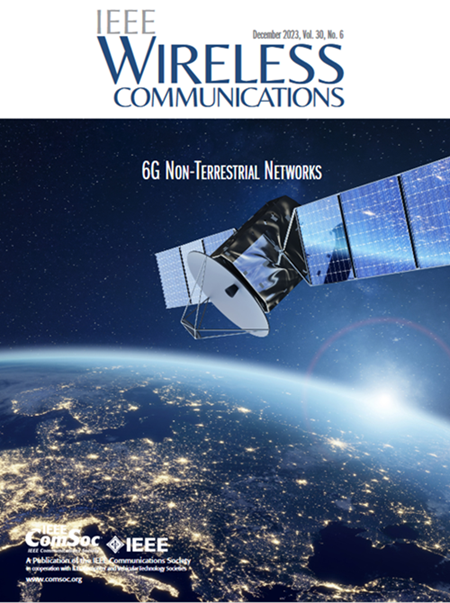MaCro: Mega-Constellations Routing Systems with Multi-Edge Cross-Domain Features
IF 10.9
1区 计算机科学
Q1 COMPUTER SCIENCE, HARDWARE & ARCHITECTURE
引用次数: 0
Abstract
With satellite networks evolving toward gigantic, hybrid, and heterogeneous, non-terrestrial networks (NTN) have become one of the key research topics in 6th Generation (6G) networks. Routing, as the basic technology in NTN, has faced severe challenges. With the continuous increase of satellite constellation, for example, the huge control signaling overhead, frequent link disruption, and multi-mode traffic requirements are problems. In this article, a novel Mega-Constellations Routing (MaCRo) system with multi-edge and cross-domain features is proposed. Control and user plane are separated in order to support flexible network management of multi-layer satellite networks, based on software defined networks (SDN) and multi-access edge computing (MEC) technologies. Cross-domain resources, including communication, storage, computing, conception, and control, are utilized to realize unified scheduling for task-oriented routing. Four typically collaborative modes are discussed and the corresponding functional difference are summarized and compared. Finally, cases are studied and illustrated with key procedures, including intelligent area-segmentation routing and computational power routing. Numerical results show that the hybrid mode proposed in the MaCRo systems outperforms the other routing modes in average end-to-end latency and packet loss rate. The proposed routing system appears to be highly attractive as part of the future 6G NTN networks.MaCro:具有多边缘跨域功能的巨型组网路由系统
随着卫星网络向庞大、混合、异构方向发展,非地面网络(NTN)已成为第六代(6G)网络的关键研究课题之一。路由作为NTN的基础技术,面临着严峻的挑战。例如,随着卫星星座的不断增加,巨大的控制信令开销、频繁的链路中断、多模式的业务需求等都是问题。本文提出了一种具有多边缘和跨域特征的巨星座路由(MaCRo)系统。基于软件定义网络(SDN)和多接入边缘计算(MEC)技术,将控制平面和用户平面分离,支持多层卫星网络的灵活网络管理。利用通信、存储、计算、概念和控制等跨域资源,实现面向任务路由的统一调度。讨论了四种典型的协同模式,并对相应的功能差异进行了总结和比较。最后,对智能区域分割路由和计算能力路由等关键步骤进行了实例研究和说明。数值结果表明,在宏系统中提出的混合模式在平均端到端延迟和丢包率方面优于其他路由模式。作为未来6G NTN网络的一部分,拟议的路由系统似乎非常有吸引力。
本文章由计算机程序翻译,如有差异,请以英文原文为准。
求助全文
约1分钟内获得全文
求助全文
来源期刊

IEEE Wireless Communications
工程技术-电信学
CiteScore
24.20
自引率
1.60%
发文量
183
审稿时长
6-12 weeks
期刊介绍:
IEEE Wireless Communications is tailored for professionals within the communications and networking communities. It addresses technical and policy issues associated with personalized, location-independent communications across various media and protocol layers. Encompassing both wired and wireless communications, the magazine explores the intersection of computing, the mobility of individuals, communicating devices, and personalized services.
Every issue of this interdisciplinary publication presents high-quality articles delving into the revolutionary technological advances in personal, location-independent communications, and computing. IEEE Wireless Communications provides an insightful platform for individuals engaged in these dynamic fields, offering in-depth coverage of significant developments in the realm of communication technology.
 求助内容:
求助内容: 应助结果提醒方式:
应助结果提醒方式:


